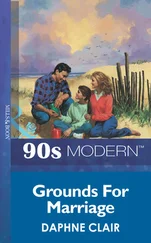Bernard Knight - Grounds for Appeal
Здесь есть возможность читать онлайн «Bernard Knight - Grounds for Appeal» весь текст электронной книги совершенно бесплатно (целиком полную версию без сокращений). В некоторых случаях можно слушать аудио, скачать через торрент в формате fb2 и присутствует краткое содержание. Жанр: Классический детектив, на английском языке. Описание произведения, (предисловие) а так же отзывы посетителей доступны на портале библиотеки ЛибКат.
- Название:Grounds for Appeal
- Автор:
- Жанр:
- Год:неизвестен
- ISBN:нет данных
- Рейтинг книги:4 / 5. Голосов: 1
-
Избранное:Добавить в избранное
- Отзывы:
-
Ваша оценка:
- 80
- 1
- 2
- 3
- 4
- 5
Grounds for Appeal: краткое содержание, описание и аннотация
Предлагаем к чтению аннотацию, описание, краткое содержание или предисловие (зависит от того, что написал сам автор книги «Grounds for Appeal»). Если вы не нашли необходимую информацию о книге — напишите в комментариях, мы постараемся отыскать её.
Grounds for Appeal — читать онлайн бесплатно полную книгу (весь текст) целиком
Ниже представлен текст книги, разбитый по страницам. Система сохранения места последней прочитанной страницы, позволяет с удобством читать онлайн бесплатно книгу «Grounds for Appeal», без необходимости каждый раз заново искать на чём Вы остановились. Поставьте закладку, и сможете в любой момент перейти на страницу, на которой закончили чтение.
Интервал:
Закладка:
‘What effect would that have had?’ asked the QC.
‘Rigor could have come on faster, giving the impression that death had occurred earlier than it really did. The trouble with that argument is that the accuracy of back-calculating is so poor that trying to adjust for temperature is not much use.’
‘So the old formulae given in the books I’ve seen for calculating from rigor is just not correct?’ persisted Miss Forbes.
Richard shook his head. ‘It’s the old story of the bell-shaped curve, which pervades much of biology. There’s a high point on the graph where most of the cases lie where, say, rigor comes on in three to six hours or so. But on each side of the peak, there’s a slope where the other cases lie, either earlier or later. If the bell is high and narrow, then accuracy is better, but if, as with rigor, the bell is low and flat, then there’s no chance of accuracy.’
He cleared his throat. ‘And that’s just for the onset of rigor. It increases in strength, then eventually passes off, called resolution, but the time when that happens is even more unpredictable. Unfortunately, many of the textbooks stick to the myth of a reliable timescale and copy it from edition to edition, because there’s nothing better to replace it with.’
‘You sound a bit of cynic, doctor,’ observed Paul Marchmont with a smile.
‘I prefer to think of myself as a realist,’ replied Richard. ‘The younger generation of pathologists are hopefully more critical of these sacred ideas of the older, dogmatic school. I met a German pathologist at a meeting last year, who is combing all the medical literature for over a century to list the variations in opinions about hypostasis and rigor.’
‘We’ve got stomach contents next; are you just as pessimistic about those?’ asked the senior barrister.
Richard rolled his eyes towards the ceiling. ‘Even worse! The old legend about stomach contents emptying in about two and half hours is again the top of the biological bell, but there are even more variable factors. The type of food, amount of liquid in it, amount of starch, personal variation and even variations in the same person. You can measure the speed of emptying in Bill Smith one day, then give him the same food another day and get a different answer! Fear, injury, coma, pain and emotional upset all modify the speed of digestion and emptying. To use it to calculate a time of death to within an hour is frankly ridiculous!’
‘Is examining the stomach contents of no use whatsoever, then?’ asked Douglas Bailey.
‘Only in the very broadest terms, insufficient to use as probative evidence. It might tell you what the last meal was and therefore you’d know that death occurred after the time it was eaten. For instance, if a man ate a curry one evening and was found dead two days later with a stomach full of curry, you’d know he hadn’t lived long enough to have his usual ham and eggs for breakfast next day.’
Angela came back here, as this was partly her province.
‘Even that’s not easy, unless digestion had not proceeded very far. We can often identify certain foods under the microscope, like meat fibres and some vegetables — but we’re not like the sleuths in crime novels, who can discover that the deceased had consumed a salmon sandwich and a cup of Earl Grey tea three hours before death!’
Marchmont held up his hands in mock surrender. ‘I get the point. Now what about temperature, which you said was the best method?’
‘Well, I said the least inaccurate,’ amended Richard. ‘Doctors have been trying since about 1840 to devise a formula to calculate time of death from the obvious drop in temperature after death — unless, of course, you happen to die in some parts of the tropics, where the post-mortem temperature actually increases!’
‘I don’t think Bristol comes into that category,’ said Douglas Bailey wryly.
‘No, but the temperature at the scene is very important, and we know that Shaw was killed during a Bristol heatwave,’ countered the pathologist. ‘The problem is that the investigation was poorly carried out, as no one took the room temperature nor the body temperature when the scene was visited. Doctor Mackintyre didn’t attend the scene and didn’t even see the body until the afternoon, over six hours after it was found, when he eventually put a thermometer in the rectum.’
‘And that matters in calculating the interval?’ asked Marchmont.
‘It’s vital, as for at least six hours, the body was cooling in the mortuary, no doubt much colder than the flat in St Paul’s, which distorts the cooling curve. We should really find out whether the place was air-conditioned, as some big city mortuaries are, which would increase the cooling even more. I’ve actually heard of a case where the body was put in the refrigerator for some hours until the post-mortem and then the pathologist took a temperature!’
‘So you can castigate any attempt at arriving at an accurate result?’ asked Penelope.
‘Certainly, I can! Even when the best procedures have been followed, the accuracy is poor and cannot be narrowed down to less than a couple of hours either side of the calculated time. It’s traditional to use a rule of thumb that a body cools at about one and half degrees Fahrenheit per hour, but all one can say about that is that if the answer turns out to be correct, it must be sheer luck!’
He paused for breath and then carried on.
‘The size of the body, the amount of fat insulation under the skin, amount of clothing, fever, hypothermia, the environmental temperature, draughts, humidity and other factors make this little better than guesswork.’
Paul Marchmont leaned back in his chair. ‘So you can confidently go into the witness box and declare that at the trial, the pathologist had been in error when he claimed that Arthur Shaw must have died between eleven and twelve o’clock that night?’
‘Absolutely. I’m sure he was just agreeing with the prosecution who were maintaining that the man was killed during that short window of opportunity when Millie Wilson was alone with the deceased.’
‘If he had been challenged on that, do you think he would have admitted that death could have been outside those tight limits?’
Richard Pryor shrugged and turned up his hands in a Gallic gesture.
‘It’s not for me to say that, but I would have hoped that Doctor Mackintyre would have done so. However, as I said earlier, some well-entrenched expert witnesses dig their heels in hard, if they are challenged.’
Penelope Forbes pursued this issue. ‘Would he have been aware of these caveats you’ve mentioned, which affect the accuracy of any estimate?’
‘I don’t know about would have known, but he certainly should have known, if he appears as an expert. There have been innumerable research papers in the journals for decades. In fact, only this year, one of the most important papers was published from Sri Lanka, where Doctor de Saram made a careful estimate using forty executed prisoners, where obviously the time of hanging was known to the minute. He found, amongst other things, that there was a “lag period”, a variable delay in initial cooling of up to forty-five minutes. Others have shown an even longer “temperature plateau”, as it’s called, where the normal body temperature persists for a time after death. So already, we have an in-built error almost as long as the hour claimed by Doctor Mackintyre.’
Richard felt that he had browbeaten his listeners long enough with his potted course in forensic medicine, but there were a few more questions from the lawyers, who wanted to make sure that they understood this most important aspect of their campaign to save Millie Wilson from many more years in prison.
When they at last finished and had been given more details of the expected date of the court appearance in London, Richard and Angela bade the lawyers farewell and escaped into the chilly street.
Читать дальшеИнтервал:
Закладка:
Похожие книги на «Grounds for Appeal»
Представляем Вашему вниманию похожие книги на «Grounds for Appeal» списком для выбора. Мы отобрали схожую по названию и смыслу литературу в надежде предоставить читателям больше вариантов отыскать новые, интересные, ещё непрочитанные произведения.
Обсуждение, отзывы о книге «Grounds for Appeal» и просто собственные мнения читателей. Оставьте ваши комментарии, напишите, что Вы думаете о произведении, его смысле или главных героях. Укажите что конкретно понравилось, а что нет, и почему Вы так считаете.












